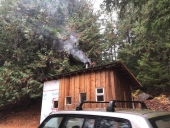








Success has a Thousand Fathers , Failure is an Orphan
LOOK AT THE " SIMILAR THREADS " BELOW !




allen lumley wrote:...your inside diameter of your heat riser is 6". Its Cross Sectional Area , C.S.A., is pi Xs 1/2 diameter squared , 3.14 x (3x3) just under 50 ''
"It is a miracle that curiosity survives formal education." -- Albert Einstein










Success has a Thousand Fathers , Failure is an Orphan
LOOK AT THE " SIMILAR THREADS " BELOW !








Good science and good theology always agree.
Life is not about saving the planet, or the economy. Life is about saving souls.








Good science and good theology always agree.
Life is not about saving the planet, or the economy. Life is about saving souls.













| I agree. Here's the link: http://stoves2.com |






